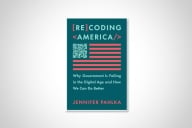You have /5 articles left.
Sign up for a free account or log in.
Stuart Barbier offered an argument against the widespread adoption of OER earlier this week in Inside Higher Ed. It was really two arguments: one about quality and the other about pay. The arguments stood in some tension with each other -- “the food is terrible, and such small portions!” -- but the more crucial flaw was in assuming that what gets assigned has a one-to-one relationship with what gets read.
Sadly, no.
First, the strengths of the argument. Yes, the quality of OER can vary across courses. That is also true of commercial textbooks. In the days before OER caught on, faculty and student complaints about textbooks were legion, and often warranted. That’s not new. Any given professor can disagree with others about which instructional materials are best for a given course. (One of the few perks of being the only poli sci instructor at DeVry was absolute control over textbook selection.) I agree that faculty should be able to select the materials that will best enable students to learn what they’re supposed to, but that’s not necessarily the same as choosing the best book.
It’s also true that the development and curation of OER is labor that’s worthy of compensation. Many states have grant programs for that purpose, as do several foundations and a host of colleges and universities. College librarians play a key role in curation, which makes sense; libraries have always been about open access to materials. The other option, of course, is that much OER is already out there, free for the taking. Adopting an OpenStax textbook isn’t notably more difficult than adopting a commercial one. Yes, bespoke or homegrown OER can be labor-intensive, but that’s only one option.
To his credit, Barbier acknowledged cost as an issue. In the community college world, I can attest that it’s very much an issue.
But cost isn’t just cost. It’s also a question of access.
There’s what you assign, and then there’s what they read. In most classes, those two are not the same. Textbook costs often prevent students from buying the book in the first place. When that happens, what starts as an economic issue quickly becomes an academic issue (and then can become a financial aid issue). A great book that goes unbought and unread isn’t as good as a pretty good book that a student actually reads.
Classes go better when students do the reading.
In very well-funded colleges with many affluent students, the OER advantage may be somewhat attenuated; wealthy students can afford textbooks. But in most places, a great many students are struggling economically. They will frequently try to skimp on textbooks if they believe they can. Often, by the time they realize it was a bad idea, the damage has been done.
The access issue applies to formats as well as cost. When the OER in question are available electronically, it’s also easier for students with part-time jobs (or even full-time jobs) to read on their phones during breaks. That’s a far cry from Machiavelli’s oak-paneled study, but it’s better than not reading.
That’s probably why the folks who study these things keep finding that greater adoption of OER leads to greater student academic performance. Students who actually read pretty good material outperform students who skip great material. It’s not just about the material. It’s about what students do with it, or if they encounter it at all.
It’s not just about the book.



